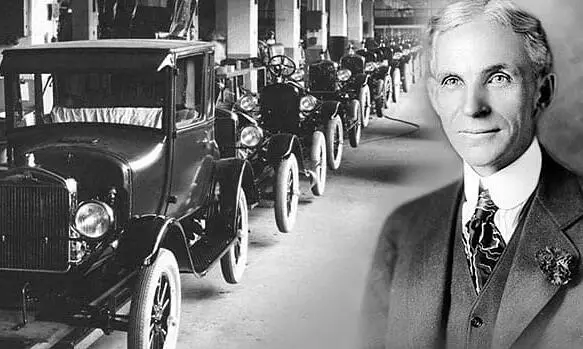| Some inventions are based on simple ideas or principles. |
| Barometers are based on the idea that air has weight and pushes down on objects. |
| A barometer measures this air pressure. |
| Evangelista Terricelli invented barometers in Italy in 1643. |
| Other inventions have taken longer to develop. |
| The automobile has thousands of parts and it took a long time to make a really useful car. |
| Henry Ford was one of the first people to make a reliable automobile. |
| In 1765, James Watt invented the steam engine. |
| Within a few years, a Frenchman, Nicolas Cugnot, had built a steam-powered vehicle. |
| These steam carriages were used in England in the 1800s. But they were big and slow. |
| They looked like a train without the tracks. |
| Most people preferred to travel by train. |
| In Germany during the 1870s and 1880s, |
| Nikolaus Otto and Gottlieb Daimler |
| developed the internal combustion engine. |
| This ran by burning gasoline. |
| Another German, Karl Benz, built a gasoline-powered car. |
| Around the world, there were many inventors trying to build a car that would be better than the one before. |
| Some people thought that electric cars would become common. |
| In the 1890s, several inventors working in the United States developed a gasoline-powered car that was practical for daily use. |
| Henry Ford was born on a farm in Michigan in 1863. |
| As a boy, he loved to take clocks and watches apart and reassemble them. |
| Eventually, he went to work for the Detroit Edison Company. |
| In his spare time, he worked on a “horseless carriage”, as the early cars were called. |
| In 1896, he completed a car that ran smoothly. |
| He later sold it and made another one. |
| Since early cars were made by hand, they were usually quite expensive. |
| Not only that, but when they broke down, there were no repair shops to take them to. |
| One had to know how to repair a car oneself. |
| Henry Ford tried to make cars which would be affordable, and which would not break down very easily. |
| His Ford Motor Company was formed in 1903 in Detroit, Michigan. |
| Since many parts had to be brought together to make a car, Ford developed the assembly line. |
| On the line, each worker would do one specific job. |
| When the car reached the end of the assembly line, it was finished. |
| In this way, many cars could be made in a single day. |
| The result was that Ford was able to bring the price of cars down. |
| Ford’s “Model T” car was advertised as being “as frisky as a jack rabbit and more durable than a mule”. |
| Since it cost hundreds, rather than thousands, of dollars, |
| many ordinary families were now able to buy a car. |
| Once many people had cars, their habits began to change. |
| People didn’t have to live next to the factories or offices that they worked in. |
| Going for Sunday drives or travelling to tourist sites became a common thing. |
| In 1905, a car drove across the United States and back again. |
| In 1912, a car went across Canada from coast to coast. |
| Soon there was public pressure for good roads so that cars could travel anywhere in North America. |
| Henry Ford was not the only inventor of the modern car. |
| However, he was able to make a car that everyone could use and afford. |
Subscribe
0 Comments
Oldest





